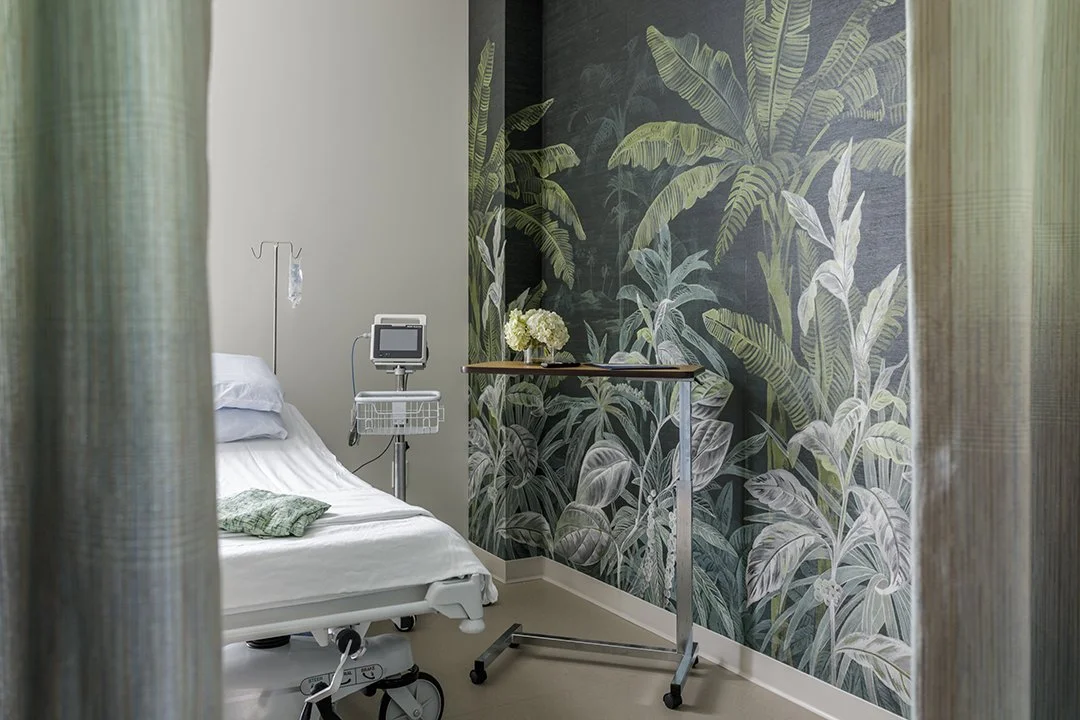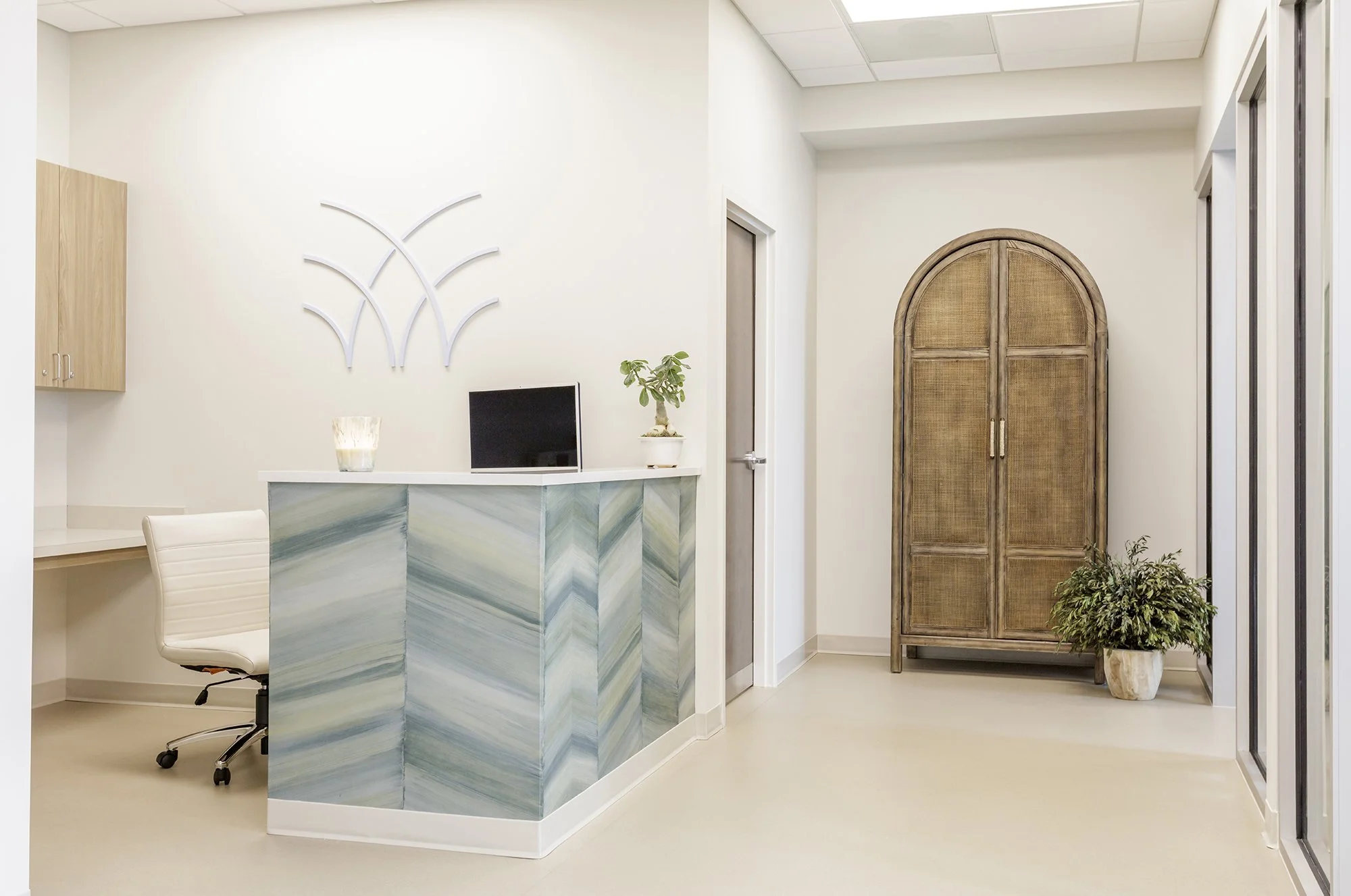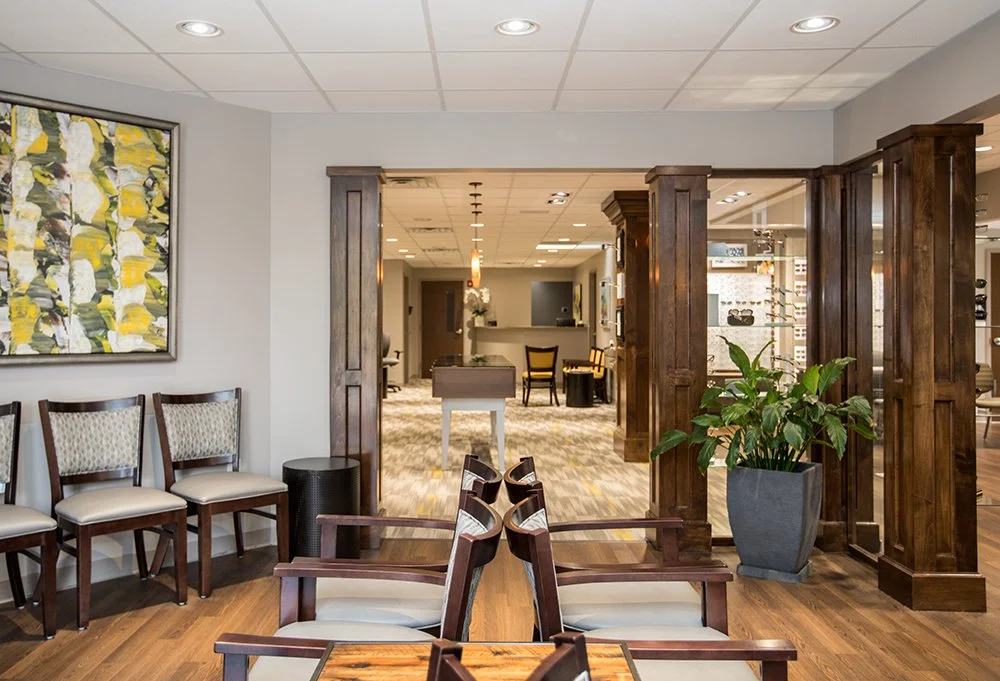The Healing Power of Design: Why a Beautifully Designed Doctor’s Office Matters for Patient Experience
When patients walk into a doctor’s office, their first impression begins long before they meet the physician. The environment matters. From the colors, lighting, seating, décor, and overall flow, it speaks volumes about the care they are about to receive. Studies show a higher rate of acceptance of treatment in well-designed office spaces. A thoughtfully designed interior not only calms anxieties but also fosters trust, comfort, and connection. In today’s healthcare landscape, where patient satisfaction and retention are crucial, investing in interior design is more than an aesthetic choice, it’s a strategic one.
First Impressions Shape Trust
We know that patients often arrive at medical appointments feeling uneasy or stressed. A sterile, cluttered, or poorly lit waiting room can amplify those feelings. Conversely, a well-designed space with warm lighting, comfortable seating, and intentional details can immediately put patients at ease. The environment signals that their wellbeing has been considered at every level, creating a foundation of trust before a single word is exchanged with the care team. It also allows professionals to look cutting edge in their field.
The Role of Comfort in Patient Satisfaction
Patient satisfaction doesn’t just depend on clinical outcomes, it’s shaped by the entire experience. When patients feel comfortable in their surroundings, they’re more likely to feel satisfied with their visit. Elements like soothing colors, natural light, art, and even acoustics can transform the atmosphere from clinical to welcoming. A comfortable environment reduces stress, encourages open communication with providers, and leaves patients with a more positive perception of their care.
Design as a Tool for Retention
Healthcare is a competitive field, and patients today have choices. A well-designed office can set a practice apart, creating memorable experiences that encourage patients to return. Just as restaurants and hotels focus on ambiance to keep customers loyal, medical offices can use design to show that they value patients not only as individuals seeking treatment but as people deserving of comfort and respect. Patients who feel cared for holistically are far more likely to remain loyal and recommend the practice to others.
Supporting Healing Through the Environment
Studies show that the physical environment can influence healing outcomes. Calm, well-designed spaces can lower blood pressure, reduce stress hormones, and promote a sense of wellbeing, all of which support better health. From biophilic design elements (like plants and natural textures) to thoughtful spatial layouts that ensure privacy and flow, the right design choices actively contribute to the healing process.
Investing in Experience is Investing in Care
Ultimately, interior design in healthcare settings is not just about appearances. It’s about creating an experience that reassures, comforts, and uplifts. A doctor’s office that feels more like a sanctuary than a clinic sends a clear message: the patient’s experience matters. By investing in design, practices invest directly in patient satisfaction, loyalty, and overall wellbeing.
A beautifully designed space isn’t a luxury, t’s a vital part of modern healthcare. When patients feel welcomed and cared for the moment they step through the door, their trust deepens, their stress lessens, and their loyalty grows. In today’s world, where healthcare is as much about experience as it is about treatment, design truly is part of the healing journey.




